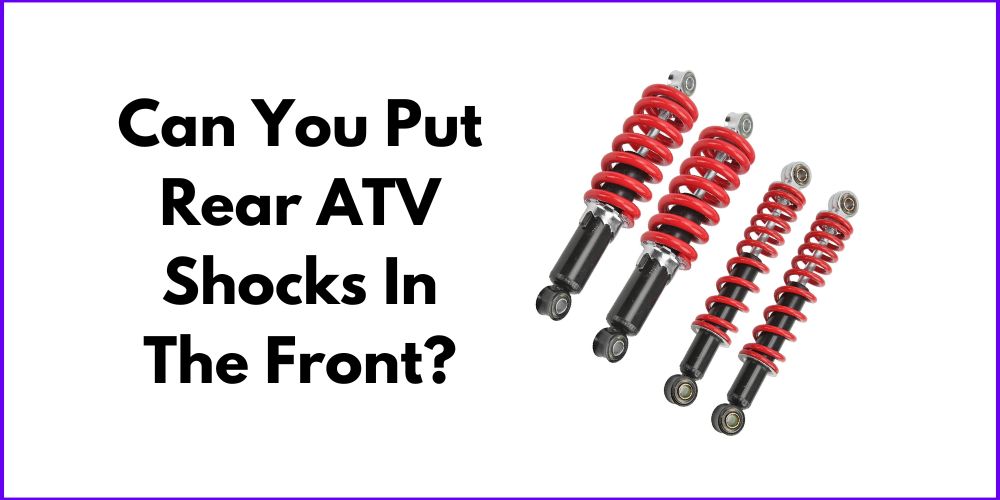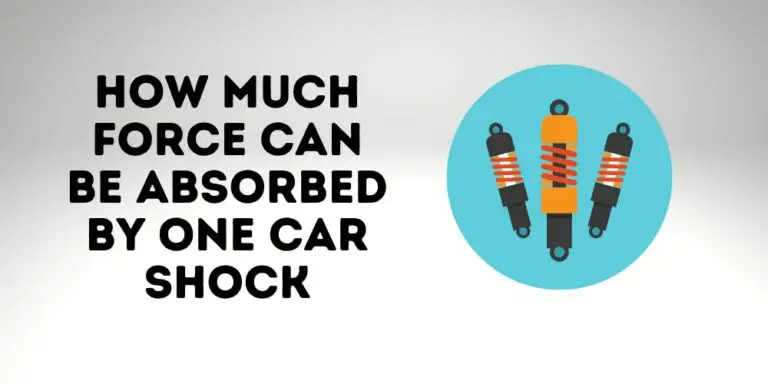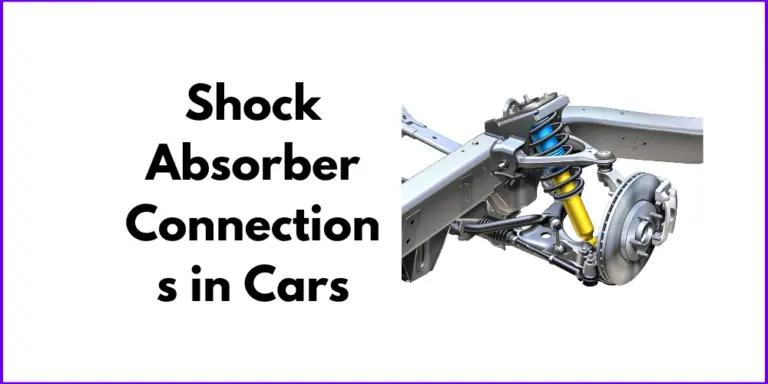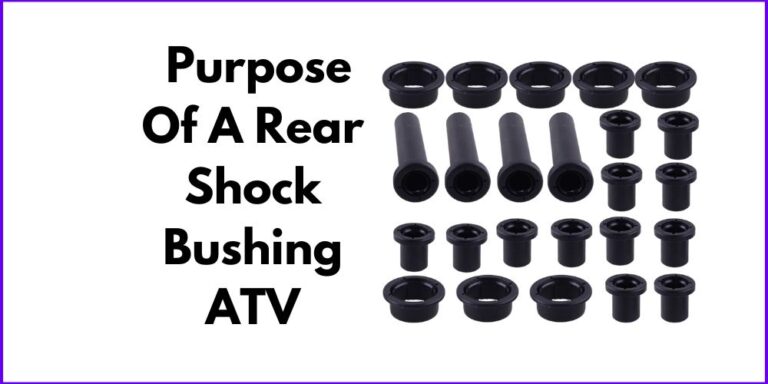ATVs are beloved vehicles for off-road adventures, thanks in part to their essential component: ATV shocks. These shocks ensure stability, control, and comfort by absorbing impacts and maintaining tire contact with the ground. But is it possible and advisable to install rear ATV shocks in the front? This blog post investigates the feasibility of this modification, considering design and functionality differences. By exploring potential benefits and drawbacks, we aim to provide insights for making informed decisions about ATV suspension upgrades. Let’s dive into the possibilities of swapping rear ATV shocks to the front.
Can You Put Rear ATV Shocks In The Front?
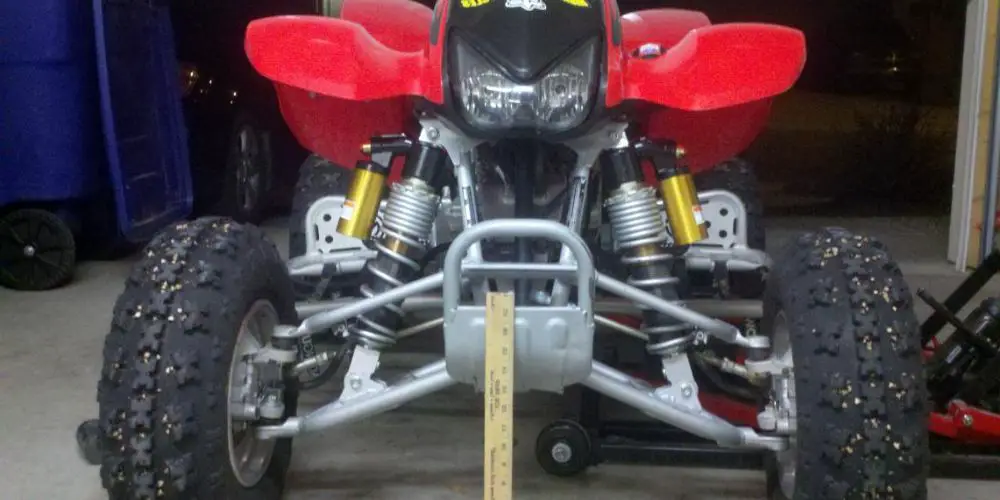
The idea of swapping rear ATV shocks to the front has been explored by some enthusiasts. While it is technically possible, it’s important to consider the differences in design and functionality between front and rear shocks. Front shocks are specifically designed to optimize steering responsiveness and front-end stability, while rear shocks focus on absorbing impacts and maintaining rear-wheel traction.
Swapping shocks may result in a slightly higher front-end stance, which can be desirable in certain situations for improved ground clearance and maneuverability. However, it’s crucial to approach this modification with caution, as it can potentially affect handling, stability, and ride quality.
While some riders have successfully made the swap, it’s recommended to consult experts or ATV manufacturers to ensure compatibility with your specific ATV model and riding style. Prioritizing safety and optimal performance should be the guiding principles when considering any modifications to your ATV’s suspension system.
Key Differences Between Front and Rear ATV Shocks
When considering the feasibility of swapping rear ATV shocks to the front, it’s crucial to understand the key differences between front and rear shocks. These differences encompass design variances, dimensions, mounting points, compatibility, damping characteristics, and response to different types of terrain. Let’s explore these factors in detail.
- Design Variances and Implications for Swapping Shocks:
- Front shocks are specifically engineered to optimize steering responsiveness and front-end stability, while rear shocks focus on absorbing impacts and maintaining rear-wheel traction.
- Swapping shocks may disrupt the intended balance of the suspension system, potentially affecting the ATV’s handling and stability.
- Differences in Dimensions, Mounting Points, and Compatibility:
- Front and rear shocks often have different dimensions, with front shocks being shorter to accommodate the ATV’s geometry and weight distribution.
- Mounting points on the ATV frame and A-arms are designed to accommodate specific shocks, which may differ between the front and rear.
- Swapping shocks may require modifications to the ATV’s frame or suspension components to ensure proper fitment and compatibility.
- Variation in Damping Characteristics and Response to Different Types of Terrain:
- Front and rear shocks are tuned differently to address the specific demands placed on each wheel.
- Front shocks are typically designed to provide more responsive damping, contributing to steering precision and control.
- Rear shocks are engineered to absorb impacts from obstacles and maintain rear-wheel traction, prioritizing stability.
- Swapping shocks may lead to differences in damping characteristics, potentially impacting the ATV’s performance and ride comfort across various terrains.
Potential Challenges and Considerations
- Structural Compatibility and Modifications Required:
- Swapping shocks may require modifications to the ATV’s frame or suspension components to ensure proper fitment and structural integrity.
- It’s essential to consult with experts or ATV manufacturers to determine the feasibility of the swap and identify any necessary modifications.
- Impact on Handling and Ride Quality:
- Altering the shock setup can affect the ATV’s handling characteristics, such as steering responsiveness, cornering stability, and weight distribution.
- Swapping shocks without careful consideration may result in compromised ride quality, diminished control, or unpredictable behavior on different terrains.
- Safety Concerns and Risks Associated with Swapping Shocks:
- Modifying the suspension system can introduce safety risks, including potential instability, loss of control, or increased stress on other components.
- It’s important to prioritize rider safety and thoroughly assess the potential risks before making any modifications.
- Manufacturer Warranties and the Impact of Modifications:
- Swapping shocks may void the manufacturer’s warranty, as it involves altering the original design and intended specifications.
- Consider the implications on warranties and the potential financial consequences of any warranty claims that may arise.
When contemplating swapping rear ATV shocks to the front, it’s crucial to weigh these differences, challenges, and considerations. Seeking professional advice and thoroughly evaluating the potential impact on your ATV’s performance, safety, and warranty coverage is essential. Remember, modifying your ATV’s suspension system should be done responsibly, ensuring optimal performance and rider satisfaction.
FAQs on Putting Rear ATV Shocks In The Front
How can I make my ATV ride smoother?
To improve the smoothness of your ATV ride, there are a few key factors to consider. First, ensure that your tires are properly inflated and not under or over-pressured, as tire pressure can significantly impact ride quality. Additionally, check your shocks to ensure they are not bottoming out excessively. If you frequently experience a rough ride, it may be worth considering upgrading your shocks to ones with better dampening capabilities.
How do you stiffen ATV shocks?
If you feel that your ATV shocks are too soft and need to be stiffened, there are a few methods to achieve this. One common approach is adjusting the preload on the shocks. This can usually be done by turning the preload adjustment collar on the shock body. By increasing the preload, you can stiffen the shocks and reduce sag under load. However, it’s important to follow the manufacturer’s guidelines and recommendations for adjusting the shocks to avoid any potential damage.
Why does my ATV shake at high speeds?
Shaking and wobbling on an ATV, particularly at high speeds, can often be attributed to issues with the front wheels and tires. If the wheels are misaligned, the tires are unbalanced, or there are problems with the wheel hub bearings, it can lead to front-end shake. Even slight vibrations can be felt through the handlebars, especially when riding on rough or uneven terrain. Regular maintenance, including wheel alignment, tire balancing, and checking the condition of wheel hub bearings, can help mitigate these issues and ensure a smoother ride.
Final Thoughts
All in all, while it is technically possible to swap rear ATV shocks to the front, caution is advised. The differences in design and functionality between front and rear shocks can lead to variations in handling and ride quality. Therefore, it is crucial to consult professionals and manufacturers before making any modifications to your ATV’s suspension system. Their expertise ensures compatibility, safety, and optimal performance. Prioritizing expert guidance will help you make informed decisions for a successful and satisfying ATV modification.

